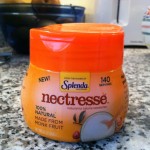How Do You Make, How Do You Take Your Community?
Is there a sure-fire way to tell the real thing from an imitation? And what allows an imitation to be acceptable or even preferable? When it comes to fulfilling our natural desire for community, who is to say if one kind is more genuine or life-giving than another?
Some months after advising me to lay off the salt, my doctor also told me to cut out sugar and all white foods—wait, I think cauliflower is allowed — as much as possible. He drives a hard bargain. Apparently while the numbers involved were not exactly alarming, there was room for improvement. By all means, he said, keep exercising and follow the lead of your highly health conscious offspring who do planks on the living room floor when they’re not running or weight lifting (my workouts are kind of like theirs), eat greens and grains constantly (who do you think buys and cooks?) and either chew just wheat bread or eschew the bread food group entirely (OK, this still seems a bit extreme to me). My husband should be included in that camp too, though he does love his dark chocolate when evening rolls around.
who do planks on the living room floor when they’re not running or weight lifting (my workouts are kind of like theirs), eat greens and grains constantly (who do you think buys and cooks?) and either chew just wheat bread or eschew the bread food group entirely (OK, this still seems a bit extreme to me). My husband should be included in that camp too, though he does love his dark chocolate when evening rolls around.
Anyway, not finding it pleasant to do without sweetness entirely, I discovered a wonderful little orange container called “nectresse” in the baking aisle at the grocery store. I’m not sure why they couldn’t go with a capital “N” at the beginning of the word, but I bet it has something to do with a simplicity effect, a gentleness factor. The stuff is made from monk fruit, whatever that is. Grown in a monastery perhaps? Oh good. Best of all, even though it’s produced by the same outfit that’s responsible for “Splenda” – a mysterious substance that may be more pernicious than regular sugar – I think my conscience can stay pretty clear as I put a little bit of this “100% NATURAL” powder in my morning coffee.
Which brings me to the subject of the Sunday Assembly. Maybe you heard the NPR story recently about this new kind of – get ready for the oxymoron- “godless church.” It started about a year ago in England and has jumped across the pond, as well as elsewhere. Read or listen to the story here.
If you’re at all like me, the word “assembly” brings to mind filing down to the school auditorium in 6th grade to hear the principal talk on a Friday much more than it does gathering with mostly other adults in some available downtown space for bonding and laughter on a Sunday. As Pippa Evans, one of the founders, says, “It’s all the best bits of church but with no religion and awesome pop songs.” Sounds like she’s talking about designing the perfect recipe; then again, she is in fact a comedian by profession, and so is her partner. Reminds me a little bit of the character James Gandolfini plays in the recent movie, Enough Said; at a party, he takes the tomatoes out of his guacamole to make a more palatable version.
I don’t begrudge them the right to start a movement welcoming all who have been disenchanted with organized religion, bearing this friendly motto: “Live Better, Help Often, Wonder More.”  While it does seem a little silly to model the whole enterprise on a real church experience, as if they’re using a kind of stencil to get the outlines of that traditional approach rather than designing something original from scratch, it’s fine whenever people can enjoy coming together in new configurations to both deepen their thinking and enjoy each other’s company.
While it does seem a little silly to model the whole enterprise on a real church experience, as if they’re using a kind of stencil to get the outlines of that traditional approach rather than designing something original from scratch, it’s fine whenever people can enjoy coming together in new configurations to both deepen their thinking and enjoy each other’s company.
Where I come out on this, however, is to feel more emboldened about keeping up – insofar as it is possible — the various communities I’ve been a part of through the different stages of my life. Looking back, I see that they were and are, for the most part “100% NATURAL.” That is, they grew gradually over time with connective tissue, or some kind of common ground, that was organic. There’s no way I’m going to turn away from the wide network of friends in the town we just left after a dozen years; a kind of touching back will go on for  a while. When I took my son to Washington D.C. recently, we stayed with my very first friend (by virtue of the fact that our mothers were best friends). She took me to her book group, one that I had visited previously about 10 years ago, and these women treated me as a friend, too, by virtue of my connection with Clare. When I went back to visit my brother who still lives in our hometown, I got to chat with neighbors just a little younger than my parents, people who remember me at the bus stop and were thrilled to meet my children. And a few days ago, I returned to a campus where I had taught for a stretch of years right after college. We gathered at a memorial service for a colleague; while a number of us had left the place long ago, we still felt the connective tissue, the shared memories. In a way that particular era had disappeared, and in a way it hadn’t. More precisely, it had been absorbed somehow deep within each of us.
a while. When I took my son to Washington D.C. recently, we stayed with my very first friend (by virtue of the fact that our mothers were best friends). She took me to her book group, one that I had visited previously about 10 years ago, and these women treated me as a friend, too, by virtue of my connection with Clare. When I went back to visit my brother who still lives in our hometown, I got to chat with neighbors just a little younger than my parents, people who remember me at the bus stop and were thrilled to meet my children. And a few days ago, I returned to a campus where I had taught for a stretch of years right after college. We gathered at a memorial service for a colleague; while a number of us had left the place long ago, we still felt the connective tissue, the shared memories. In a way that particular era had disappeared, and in a way it hadn’t. More precisely, it had been absorbed somehow deep within each of us.
I’m beginning to make inroads here, in a new place, to “get settled” as people are so fond of saying. I’ll do it by adding new circles — I prefer these to assemblies because they can have some motion, like a multi-colored mobile — layered over the ones I already have. Inviting neighbor families over for back to back dinners before the kids dispersed for school felt like a good start.
It can be all be sweet, I know it can. Hmm, come to think of it, a little salt substitute could be nice, too…



